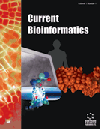
Full text loading...

Non-small Cell Lung Cancer (NSCLC) is characterized by key gene mutations, such as EGFR, KRAS, and ALK. ALK rearrangement occurs in 3–5% of patients with non-small cell lung adenocarcinoma and is related to different clinical characteristics. Although ALK tyrosine kinase inhibitors have shown efficacy, drug resistance remains a challenge. This current study aims to determine the unique molecular characteristics of ALK-positive lung adenocarcinoma to improve detection and prognosis.
GSE128311 integrates expression profiling data by array from GSE128309 and noncoding RNA profiling data by array from GSE128310, including 42 patients with ALK-positive lung adenocarcinoma and 35 patients with ALK-negative lung adenocarcinoma. This data was analyzed by eight feature ranking algorithms, yielding eight feature lists. These lists were fed into incremental feature selection to extract essential features.
Key differentially expressed genes and miRNAs were identified, and functional enrichment analysis was carried out.
Results of the imbalance of the cell cycle pathway, FOXM1 transcription factor network, and immune response process in ALK-positive tumors were emphasized. It is worth noting that CX3CL1, MMS22L, DSG3, RUFY1, miR-652-5p, and miR-1288 are potentially important markers. Gene set enrichment analysis revealed the low expression of the cell cycle pathway in ALK-positive samples.
This comprehensive computational analysis provides new insights into the molecular basis of ALK-positive lung adenocarcinoma and determines promising biomarkers for further research.

Article metrics loading...

Full text loading...
References


Data & Media loading...
Supplements